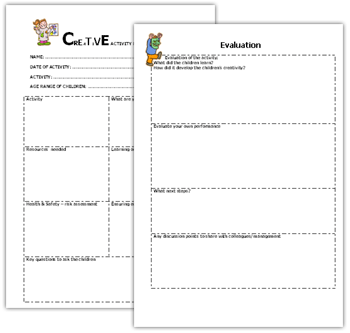Hi a very warm welcome to the site. Depending on the age of the children, you have a few options when teaching about foods and the reason why one food is unhealthy and another is considered less so. Good choices to focus an activity on is vegetables, fruits, starchy breads, oats, pasta, rice and high protein foods such as nuts, pulses, soya, beans, seeds and drinks like water and milk. You may also be expected to include meat.
If you feel the children already know a good range of food and drink names and can associate with the salt, sugar and fat content that makes each more or less favourable then the sorting & sticking activity you describe is good.
Example creative plan adapt the title to identify the learning your chosen activity has.

Others ideas that promote health involve handling, preparing and cooking real foods.
- Explore maize as a healthier snack alternative to potato crisps: play with raw kernels in a large sensory tray alongside cups, spoons and plastic foods. Pop the corn ready to eat. Nutritional value of popcorn on wikipedia
- Make sandwiches using wholemeal bread as an alternative to white bread. Use soya cheese spread, chopped egg, snipped cress, sliced tomato, cucumber and lettuce. Grow cress on cotton wool in plastic cups - seeds on amazon.co.uk
- Prepare oranges for snack/desert then use the peel in a playdough activity
- Chop and slice fruits/veg for a salad, soup or to skewer. Fruits are naturally high in sugar so juices and smoothies that concentrate the sugar of more than 1 fruit into a single glass could be seen as unhealthy as a fizzy drink.
- Guess the fruit/veg that's concealed inside a cloth bag. Match it to a picture.
- Roast to eat and plant pumpkin seeds - on amazon.co.uk
- Pop open fresh peas, count, weigh and sing a song - 5 peas pressed printables
- Use scissors to cut up curly kale, grate sweet potatoes & mix to a dough with a spoonful of flour and milk. Sprinkle with a little cheese and sesame oil and bake for a healthier alternative to fish fingers.
- Make oat cookies with coconut oil and honey - for children over a year old, not vegan or living with allergies/sensitivities.
 Teaching sugar to children
Teaching sugar to children on guardian.co.uk
A
vegan Diet on NHS
The
nutritional guidance for each of the UKs four home nations
I like to raise awareness of pairs!
vitamin C and
iron,
calcium and
vitamin D these are hand holding friends, needing each other to maximise absorption.
Healthy start programme supplying children with vitamin & mineral supplements
https://www.healthystart.nhs.uk/
If it helps, planning a 'healthy eating' activity doesn't necessarily mean plan an activity that examines the differences between healthy and unhealthy.
It does mean that you need to use your knowledge of those differences so that you're able to support each child's positive choice when it matters ie. by sharing information with them about why one food is better for us than another. So for example you'd know the reasons why you might choose to enjoy a vegetable related activity rather than a jam doughnut one (life's tough

)
Eat well - NHS change for life
Hope this helps a little